
Regina is the capital city of the Canadian province of Saskatchewan. The city is the second-largest in the province, and is a commercial centre for southern Saskatchewan. As of the 2021 census, Regina had a city population of 226,404, and a metropolitan area population of 249,217. It is governed by Regina City Council. The city is surrounded by the Rural Municipality of Sherwood No. 159.

Edwin Fitzgerald, known professionally as Eddie Foy and Eddie Foy Sr., was an American actor, comedian, dancer and vaudevillian.
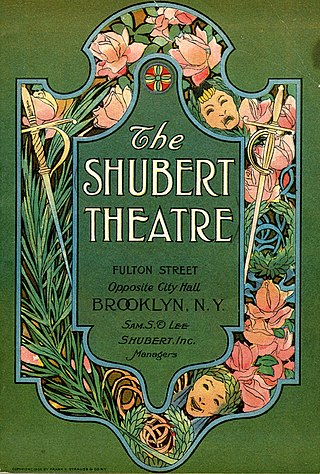
The Shubert Organization is a theatrical producing organization and a major owner of theatres based in Manhattan, New York City. It was founded by the three Shubert brothers — Lee, Sam, and Jacob J. Shubert — in the late 19th century. They steadily expanded, owning many theaters in New York and across the United States. Since then it has gone through changes of ownership, but it is still a major theater chain.
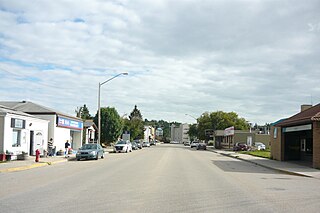
Lumsden is a town in the Qu'Appelle Valley in south central Saskatchewan, Canada, 31 km northwest of the city of Regina. It is surrounded by the Rural Municipality of Lumsden No. 189. The town functions as both a farming community and an unofficial suburb of Regina. Lumsden has an active artistic community, which consists of many writers, painters, and sculptors.
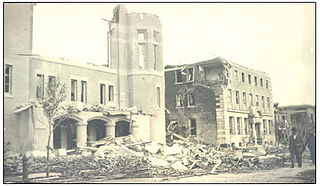
The Regina Cyclone, or Regina tornado of 1912, was a tornado that devastated the city of Regina, Saskatchewan, Canada, on Sunday, June 30, 1912. It remains the deadliest tornado in Canadian history with a total of 28 fatalities and about 300 people injured. At about 4:50 p.m., green funnel clouds formed and touched down south of the city, tearing through the residential area between Wascana Lake and Victoria Avenue, and continuing through the downtown business district, rail yards, warehouse district, and northern residential area.
Theatre Owners Booking Association, or T.O.B.A., was the vaudeville circuit for African American performers in the 1920s. The theaters mostly had white owners, though about a third of them had Black owners, including the recently restored Morton Theater in Athens, Georgia, originally operated by "Pinky" Monroe Morton, and Douglass Theatre in Macon, Georgia owned and operated by Charles Henry Douglass. Theater owners booked jazz and blues musicians and singers, comedians, and other performers, including the classically trained, such as operatic soprano Sissieretta Jones, known as "The Black Patti", for black audiences.

The Saskatchewan Transportation Company (STC) was a Crown corporation in the Canadian province of Saskatchewan responsible for operating intercity bus routes in the province from 1946 to 2017. Created in 1946 by an Order in Council giving the company a mandate to provide service between major urban centres and to as much of the rural population as possible, STC was a wholly owned subsidiary of the Crown Investments Corporation of Saskatchewan.

Many historically significant buildings in Regina, Saskatchewan were lost during the period 1945 through approximately 1970 when the urge to "modernize" overtook developers' and city planners' sense of history and heritage. The old warehouse district to the north of the old CPR tracks was Regina's original commercial raison d'être once Lieutenant-Governor Edgar Dewdney had established the site of his considerable landholdings as the Territorial Capital. 1899 to 1919 Washington Park and 3431 Dewdney Ave building as CPR commercial logistics building, expanded connected with significant conversion of shipping of commercial goods from train to truck and cancellation of passenger service on the railway, the Warehouse District immediately adjacent to the train line has ceased to be exclusively industrial in character. Some areas of the Warehouse District have been transformed into a shopping, entertainment and residential precinct.

The Roman Catholic Archdiocese of Regina is a Roman Catholic archdiocese comprising the southern part of the Canadian province of Saskatchewan, as far north as the 30th township, or about 51°30' lat. The metropolitan province includes the suffragan dioceses of Prince Albert and Saskatoon. The seat of the diocese is in the city of Regina.
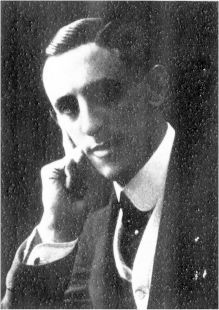
Paul Alfred Rubens was an English songwriter and librettist who wrote some of the most popular Edwardian musical comedies of the early twentieth century. He contributed to the success of dozens of musicals.
Regina City is a former provincial electoral division in the Canadian province of Saskatchewan.

The 44th Street Theatre was a Broadway theater at 216 West 44th Street in the Theater District of Manhattan in New York City from 1912 to 1945. It was originally named Weber and Fields' Music Hall when it opened in November 1912 as a resident venue for the comedy duo Weber and Fields, but was renamed to the 44th Street Theatre in December 1913 after their tenure at the theatre ended. It should not be confused with the Weber and Fields' Broadway Music Hall, often referred to as simply Weber and Fields' Music Hall and also known as Weber's Music Hall or Weber's Theatre, which was used by both Weber and Fields or just Weber from 1896 through 1912.
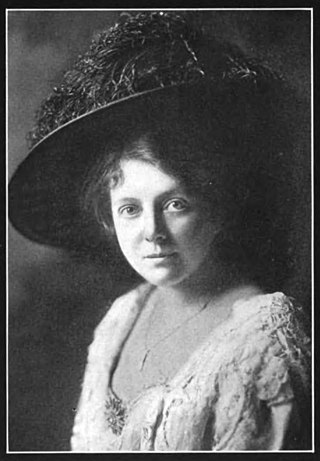
Blanche Lillian Deyo was an American dancer, actress, and singer who performed in multiple theatrical venues -- Broadway, vaudeville, burlesque, ballet, and international variety theaters—throughout the late nineteenth and early twentieth centuries.

The Monroe Avenue Commercial Buildings, also known as the Monroe Block, is a historic district located along a block-and-a-half stretch at 16-118 Monroe Avenue in Detroit, Michigan, just off Woodward Avenue at the northern end of Campus Martius. The district was designated a Michigan State Historic Site in 1974 and listed on the National Register of Historic Places in 1975. The thirteen original buildings were built between 1852 and 1911 and ranged from two to five stories in height. The National Theatre, built in 1911, was the oldest surviving theatre in Detroit, a part of the city's original theatre district of the late 19th century, and the sole surviving structure from the original Monroe Avenue Commercial Buildings historic period.

The State Theatre is a single-screen movie theater located in Bay City, Michigan. Built in 1908 during the booming lumbering era in Michigan, the State Theatre was originally known as the Bijou, and was one of the many vaudeville and burlesque houses in Bay City. In 1930 the theater was renovated and reopened as the "Bay."

The Saskatchewan Science Centre is an interactive science museum in Regina, Saskatchewan. It is owned and operated as a not-for-profit charitable organization. Located in a former power plant in the Wascana Centre, the Saskatchewan Science Centre was officially opened in April 1989 as the Powerhouse of Discovery. In 1991, the Science Centre was expanded with the Kramer IMAX Theater.
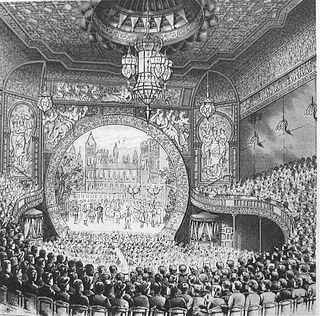
The Bijou Theatre (1882–1943) in Boston, Massachusetts, occupied the second floor of 545 Washington Street near today's Theatre District. Architect George Wetherell designed the space, described by a contemporary reviewer as "dainty." Proprietors included Edward Hastings, George Tyler, and B.F. Keith. Around the 1900s, it featured a "staircase of heavy glass under which flowed an illuminated waterfall." The Bijou "closed 31 December 1943 and was razed in 1951." The building's facade still exists. It is currently a pending Boston Landmark by the Boston Landmarks Commission.
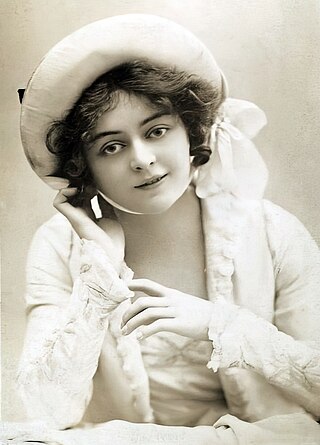
Adrienne Adele Augarde was an English actress and singer popular for nearly a decade on both sides of the Atlantic Ocean, primarily for her roles in Edwardian musical comedy.

Jack Cameron, also known as Jack Kammerer, was an American actor, singer, and acrobatic comedian whose career spanned almost five decades. He appeared in vaudeville, burlesque, film, radio, and television. Cameron was best known for his vaudeville performances, first as part of the Kammerer & Howland musical comedy act, and later as a principal comedian on the Keith-Albee circuit. He appeared in several motion pictures and could be heard on WPRO (AM) radio as the “Singing Salesman.”

Marie Pavey, also known as E. Marie Pavey, was an American stage actress and vaudeville performer who had an active career in the United States during the first three decades of the twentieth century. Trained as an actress in Chicago, she began her career in that city in 1900. In her early career she toured widely in vaudeville as a stage partner to Bert Coote.





















